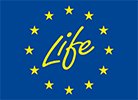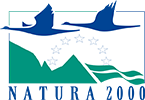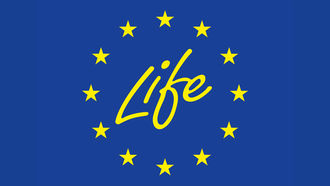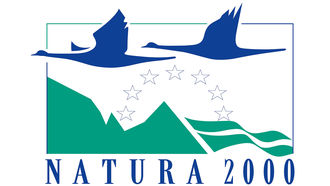© EU-LIFE
main content
Start page
EU LIFE and Natura 2000
What is the EU LIFE Programme and what does LIFE IP mean?
The LIFE Programme (L´Instrument Financier pour l´Environnement) is the EU’s funding instrument for environment, nature and climate action. It started in 1992 and – just as Habitats Directive - celebrated its 25th anniversary in 2017. So far four full funding cycles have been completed:
- LIFE I: 1992–1995
- LIFE II: 1996–1999
- LIFE III: 2000–2006
- LIFE+: 2007–2013
In this period, all over Europe a total of 3,954 projects have been co-financed.
The so-called „Integrated Projects“ were introduced to be able to implement environmental legislation and goals on a wider scale and to increase the impact of the LIFE programme. They provide funding for plans, programmes and strategies developed on the regional, multi-regional or national level. The integrative approach considers additional problem areas beyond nature and environmental aspects (e.g. climate change and sustainable use of resources). Furthermore, Integrated Projects must utilise additional EU funds (e.g. EFRE/ELER) or further national or private funding sources. Therefore, one important aim is to mobilize external funding.
The LIFE IP "Atlantic Sand Landscapes" is the first Integrated Project in Germany within the LIFE priority area "Nature and Biodiversity".
- EU-LIFE-Förderung – Bezirksregierung Münster (in German) (external link opens in a new window)
- EU-LIFE Natur – Ministerium für Umwelt, Naturschutz und Verkehr (MUNV) (in German) (external link opens in a new window)
- EU-LIFE Natur – Niedersächsischer Landesbetrieb für Wasserwirtschaft, Küsten- und Naturschutz (NLWKN) (in German) (external link opens in a new window)
- EU-LIFE – Niedersächsisches Ministerium für Umwelt, Energie und Klimaschutz (MUEK) (in German) (external link opens in a new window)
- LIFE Programme – EU Commission Environment (external link opens in a new window)
What is "Natura 2000"?
Natura 2000 is a network of nature protection areas to preserve endangered or typical habitat types and species across the European Union. It constitutes the first detailed legal instrument for habitat and species protection in the European Union. It is made up of Special Areas of Conservation (SACs) and Special Protection Areas (SPAs) designated respectively under the Habitats Directive (Council Directive 92/43/EEC on the Conservation of natural habitats and of wild fauna and flora) and the Birds Directive (Council Directive 2009/147/EC on the conservation of wild birds). With currently more than 27,000 protected areas which cover almost 20 percent of the European Union the Natura 2000 network is the largest coordinated transnational protected area network of the world and contributes significantly to the conservation of biological diversity within the EU.





